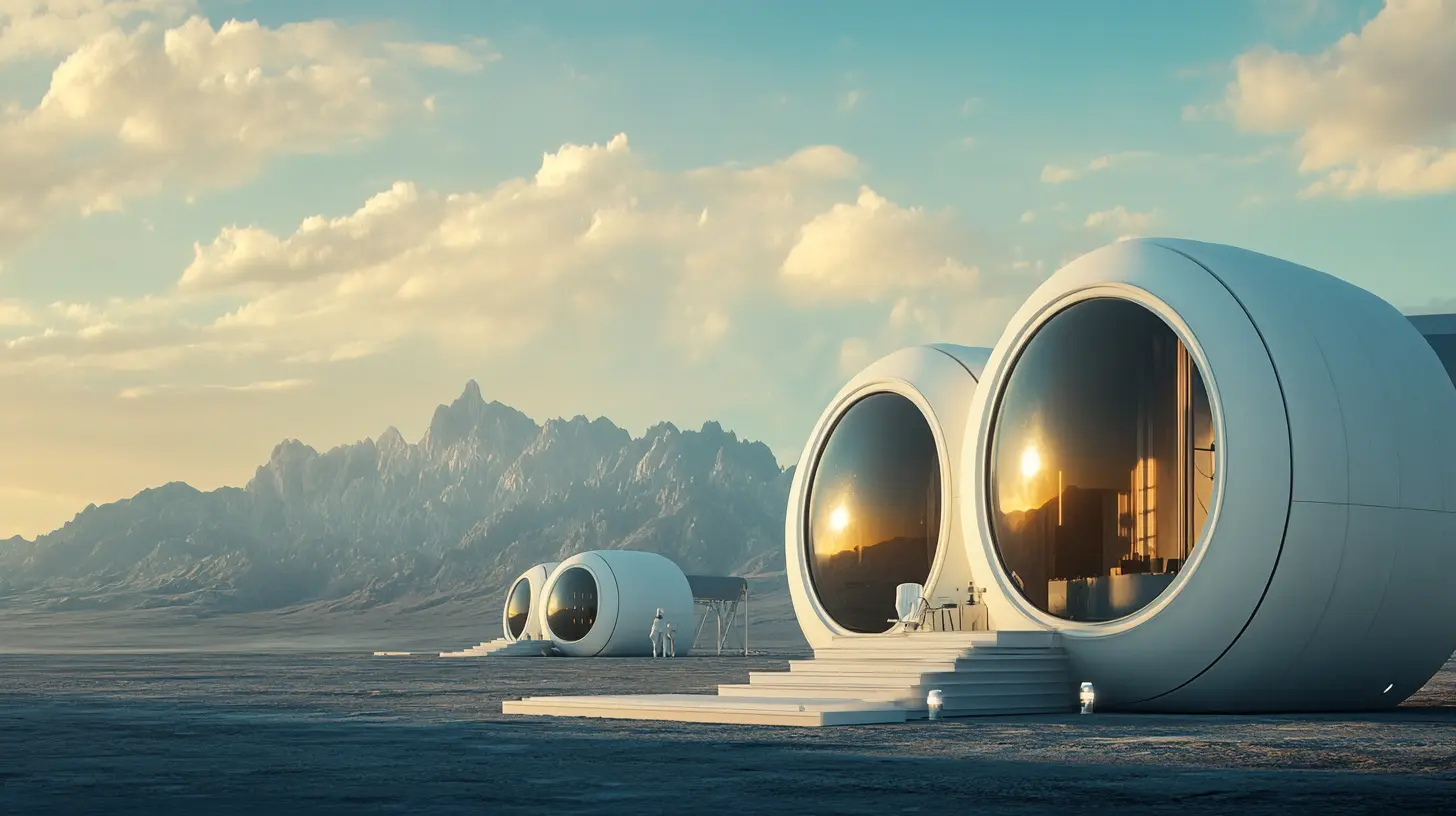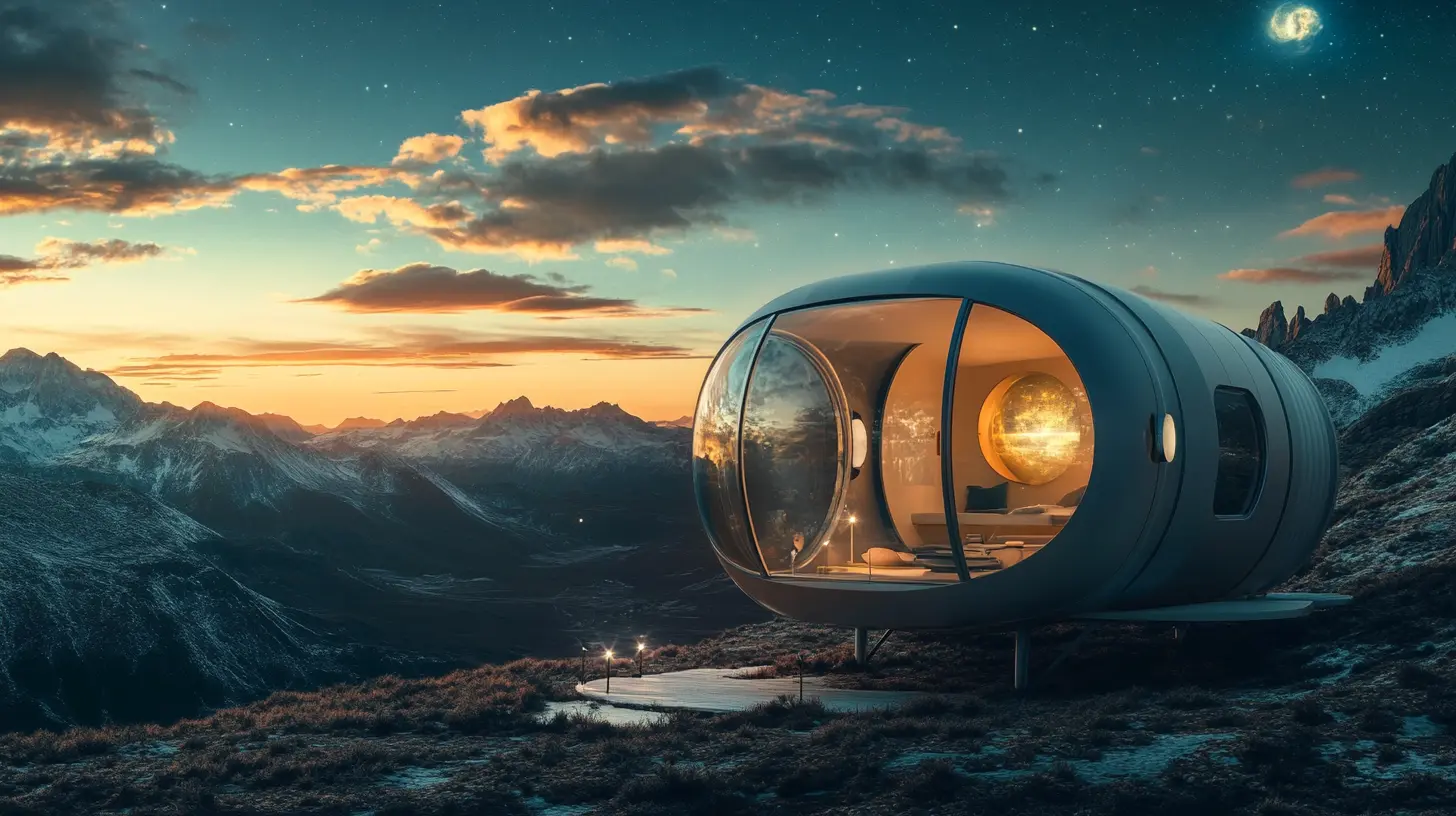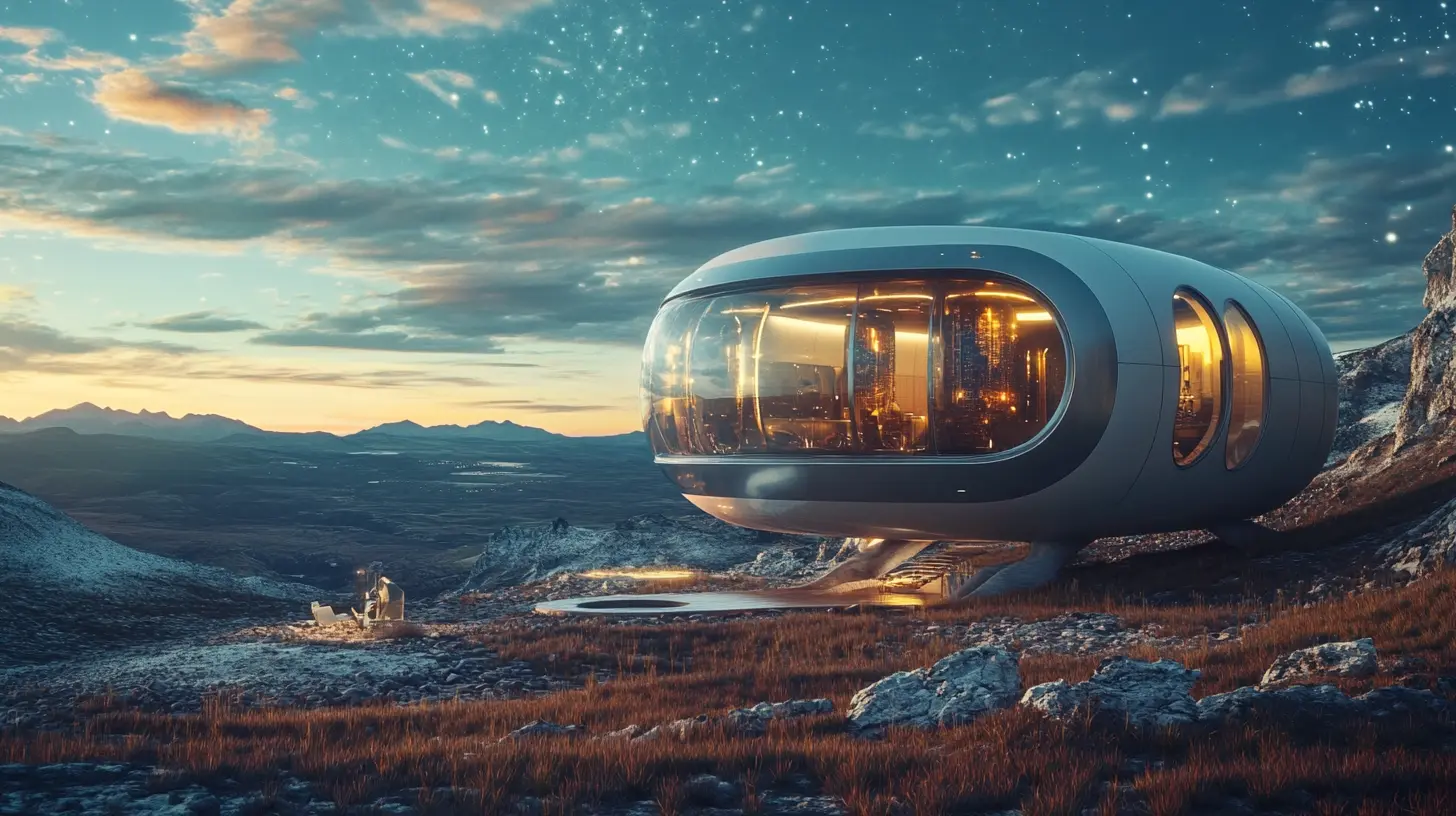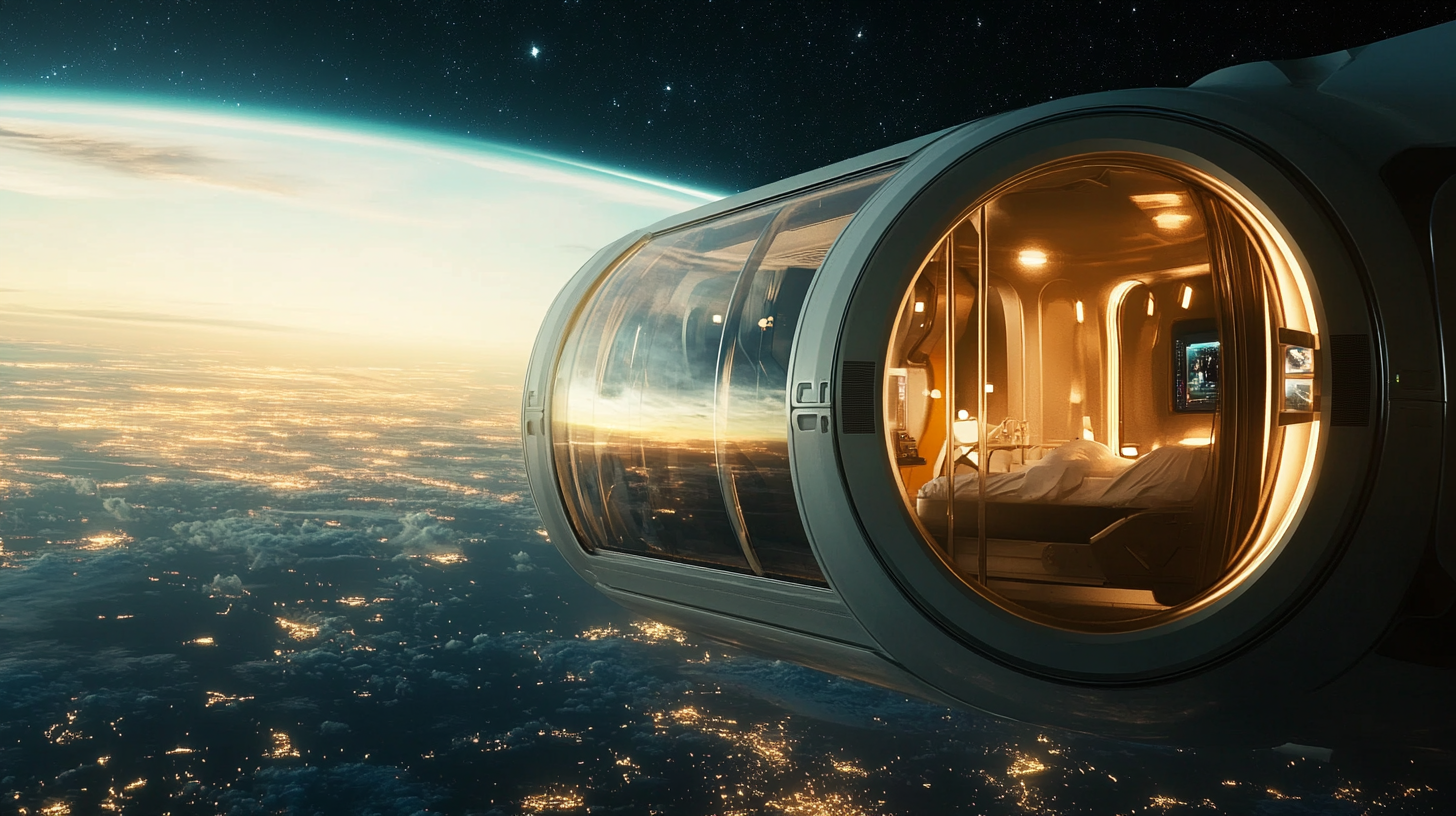Leave Your Message
- Phone
- E-mail
- Whatsapp
- Inquiry
In recent years, due to the increasing need for innovative and intelligent residential and work aspects, a new concept, the Capsule House Commercial Space, has emerged. The need for spaces that can serve multiple purposes-from recreational accommodation to remote office work- is amplified as cities rapidly grow. For instance, companies like CMER of X-Capsule are discovered to be increasingly commercialized and have a myriad of products, from-their modular leisure guest rooms, domestic workstations, and space capsules: multifunctional expansion boxes. They create a situation where the investigation of such a wave must now change its attention to industry standards that may govern global procurement of commercial space and examine them for quality and sustainability.
It is important for stakeholders to understand the specific standards in respect of Capsule House Commercial Space since it would give them an insight on how to navigate the challenges of that new and disintegrating market. And as one delves deeper into related critical benchmarks and guidelines, they will also learn about meeting the requirements of different sectors with the diverse offerings of CMER of X-Capsule under these standards. Not only does the CMER range of products meets internationally defined specifications, but it goes a step further in improving the usability of its innovative design in the area of sustainability in commercial space solutions.

It is such a broad scope for capsule houses and has been undergoing great globalization in tendency toward compact and efficient living over the last few years. One report by MarketsandMarkets indicates that over the period between 2020 and 2025, the global modular construction market is expected to grow from USD 83 billion to 109 billion, with a compound annual growth rate of 5.7%. This figure is hinting at the fact that these growing markets will show a rising trend toward accepting new-age housing models in which capsule houses can be classified under particularly in the urban areas where space and land are limited. Capsule houses, when one imagines these very simplistic and multifunctional spaces; then they are probably built to suit an extremely varied population: students, young professionals, and digital nomads. Even with the growing gig economy, according to a survey by McKinsey, they found that as of 2021, nearly 36 percent of American workers engaged in some gig work. Such kinds of shifts in the population require more flexible living arrangements; thus, capsule housing will create the hype that it is going to be falling. Sustainable development also becomes one of the core tenets that influence the evolution of capsule houses. According to the World Green Building Council, buildings account for almost 39% of carbon emissions worldwide, and therefore, the move should be toward green construction technologies. For example, capsule houses can use environmentally sustainable materials for construction and innovative building techniques to attract green-minded consumers and join global efforts in reducing carbon footprints. It is becoming increasingly evident that capsule housing is not just a trend but may well become a future staple for global living.

In constraining the relative freedom of house capsuling, the field is one of, in fact, exaggerating otherwise hidden injurious aspects of productive standards. As the external property supply scenario shifts not only nationally but globally, architects, builders and finance professionals must create a strategy to cater to the industry norms. Building capsule homes has bi-effect of viewing them as some kind of modular living in the urban setting as the proof of density and affordability, validating a wide scale of consumer preferences.
Underpinning industry standards, derived from some other federally ordained codes on railway development, are the key backbones of health and safety, olive efficient work, and innovation. They operate in large part through regulations of material and energy efficiency; in so doing, they mark improvements in performance as well as more resourceful use of technologies. Thus, all actors, in selecting suits here, will create a successful standard-compliant capsule house, conforming to environmentally friendly practices thereby leading to a resilient urban habitat.
The interest in shared practices in industry is sure to enhance the potentials for a kind of collective dialog, for the future will only increase such possibilities. This will ensure that the capsule house sector is allowed to exceed the complete scope compared to standard procedures or information in due respect given to the associated marginal slope. Furthermore, the considered creative will be in a position to help him/her push his/her 'products' into the competitive arena of stripped-down or spacious living.

When it comes acquiring capsulated houses, regulatory and safety standards are vital, particularly as globally the commercial spaces move forward into a booming market. In 2022, an evaluation of the commercial space estimated the market at around $424 billion and forecast reaching $1 trillion by 2040 as reported by the Space Data Association. With this industry booming, the demand for stricter regulatory frameworks ensuring safety, quality, and reliability in capsule house designs and constructions increases.
Regulatory compliance for capsule houses usually therefore includes the local and international building codes and, being what they are, this would locally adapt for the variations that exist in the design and construction of structures in space environments. Following the precedent from the International Space Station (ISS), it entails quite stringent safety requirements for life support systems, fire safety, and resistance to space debris. The standards released by NASA and the European Space Agency (ESA) run extensive guidelines regarding the materials to be used, construction methods, and systems engineering, so that capsule houses are able to withstand the unnatural extremes of space travel while providing a secure environment for astronauts.
Safety regulations or standards that apply to the procurement of capsule houses will therefore not only be for the safety of crew members, but again they touch on the overall successful robustness of a mission. The report clearly states that software or control system failures due to integrity failure as a result of not complying with established safety protocols could lead to significant mission failures or catastrophic accidents, according to the FAA. Plus, as the market for capsule houses continues to grow, so also must the maintenance of high standards by which regulatory compliance and safety are concerned to build trust among the investor and stakeholders, good practice for the sustainability of commercial space ventures in the long term.

The internalization of sustainability by the capsule house industry mirrors a larger movement towards ecological awareness and responsibility across other sectors. This means awareness of eco-sustainability: capsule houses are not only being designed for maximum space efficiency but for the increasing use of sustainable materials in their construction. The more the capsule house industry considers these issues, the more it harmonizes with international environmental goals and the consumer consciousness about sustainability.
Sustainable means of construction apart; several capsule house companies are creatively using waste reduction methods. These would include recycling programs for materials long considered non-recyclable and energy-systems that lower the carbon footprint of every building unit. The growing need for commercial spaces must, therefore, include sustainable procurement practices to shape urban living in the future. By adopting these practices, the capsule house industry should become an agent for paving the way for smart cities that are both habitable and responsible.
There is a still-acknowledged relationship connecting sustainable practices within the industry and consumer behavior: in particular, conscious consumerism. Presently among the buyers, dynamics of information have given rise to a conscientious consumer who considers the purchasing decisions as having direct impact on the environment. Hence, consumers have a choice to support the so-called "green" future by purchasing capsule houses that mostly display an array of sustainable practices. Progression toward sustainability, therefore, indicates that the capsule house industry embodies a more general consideration of modern-day living and environmental stewardship.
October 2023 is the cut-off date for training data. Commercial procurement for space globally is under rapid changes and one of the emerging building solutions is capsule housing in many countries. When one compares standards for capsule houses, huge discrepancies between regulatory regimes, construction practice, and cultural acceptance come to the fore. Countries that have codes that process energy and sustainability as being critical may be balanced by countries that see these ideas as secondary to affordability and speed of building.
Recent studies into housing typologies, such as tiny houses on wheels and mobile housing systems, emphasize the need to allow for flexible legislation. They can provide groundbreaking solutions to modern housing concerns, yet these approaches face challenges that are very different from those confronting their conventional housing counterparts. Such an analysis clearly indicates that enhancing international collaboration and knowledge-sharing networks would better promote acceptance and application of capsule houses.
Lessons learned from reviewing functional food regulations in Japan and various parts of the globe will exemplify the spectrum of regulatory environments, just like other standards for capsule houses. Such comparative studies recognize the necessity for safety and protection of innovation, while also providing for the needs of consumers in the regulatory environment. Appreciating this backdrop will enable stakeholder engagement in collectively articulating common standards that can funnel the development of the capsule house sector on a worldwide scale.
The procurement of capsule houses on the global market presents a number of special challenges that have to be traversed cautiously for successful deployment and integration into various markets. One crucial obstacle is the fact that construction regulations and safety standards vary from one country to another. Every region has its particular legal requirements impacting construction practices, materials, and energy efficiency standards. Differences in requirements can delay the process, which would therefore increase costs. Hence, proper investigations by manufacturers and suppliers that modify their design accordingly are of paramount importance.
Materials sourcing is another challenge that varies from one geographical location to another. Capsule houses are highly suited to standardized components that can be mass-produced; however, availability on-site can adversely affect schedules and budgets. Suppliers may face a lot of challenges in terms of logistics, such as shipping and tariff problems, leading even further to the complication of the procurement process. Hence, good partnerships with local suppliers and/or manufacturers can help counter problems of procurement more effectively.
Also, cultural differences play a critical role in the global procurement of capsule houses. Each region may carry preferences regarding design, functionality, and sustainability. Understanding local market requirements is pivotal if a company intends to design capsule housing solutions targeted at specific demographics and sustainable environments. The involvement of local stakeholders through commissions and/or market surveys will accordingly yield an important understanding for the company since this will inform its product offering and marketing strategy, thus enhancing product acceptance and success in the market.
The rise of new technologies affecting the capsule house development stems from demand for efficient, sustainable, and above all, affordable living. With urban populations on the rise and real estate prices touching the skies, capsule houses have come up as a practical alternative that ensures the best utilization of space while keeping the costs low. These compact living design units are multifunctional, easy to fit into an existing urban context, and are truly appealing as the state-of-the-art trends in modular construction are evolving. Fast track assembly and low waste input into construction give capsule houses more reasons to be chosen for sustainable practices in the building society today.
Further trends will see even tougher market regulations tightening the screws on safety, energy efficiency, and sustainability in construction. Innovations and material development will be a great contributor: maximum use of eco-friendly composites and smart technologies will create capsule homes as being space- and environmentally-justifiable. On top of this, new standards and regulations, aimed at promoting both quality and safety, will emerge as a collaborative effort between manufacturers, architects, and local municipalities so that an appropriate and quick response to changes in the market need may be accommodated.
Smart technologies will also transform capsule homes into modern living. IoT devices will allow for a unique user experience since residents can now monitor and manage their living environment remotely. As technologies continue to mature, they will further drive the development of mutable spaces for the fast-changing urban life, hence creating the opportunity for producing smarter and sustainable communities in the future. However, a major challenge for stakeholders will be how to innovate while still staying within the strict industry standards that will guarantee that such innovation will meet consumer expectations and regulatory requirements.
Since October 2023, whenever the world of a commercial industry heralds a new phase in global procurement, quality in capsule house procurement must be given utmost importance. While companies in varied sectors are engaged in an all-out race to innovate and extend their operational footprint, the establishment of best practices will ensure a significant improvement to the project outcomes. One of the major ways of achieving this is market research, which equips procurement teams with knowledge about the reputable suppliers and the industry standards. This ensures that, at the outset, they have sufficient input to advise the project decision-makers on distinguishing between materials of good quality or allircors.
The next ingredient to securing quality in capsule house procurement involves contributions from supplier evaluation protocols that impose strictness for their application. This entails an assessment of prospective suppliers from price, track record, quality assurance practices, and safety regulation standpoints. Regular audits and performance review measures can ensure standards are adhered to during the course of the partnership, on an ongoing basis, to preempt any problems.
Finally, fostering open communication with suppliers can lead to a working relationship characterized by greater collaboration and better quality control. By spelling out expectations and inviting feedback, procurement teams can position suppliers to meet specifications so that the final product attains required quality. Ultimately, the embedding of these best practices within the procurement strategy will not only safeguard against disasters but also ameliorate the quality of capsule houses in the commercial space sector.
Capsule houses are compact, minimalistic living spaces designed to cater to diverse populations, including students, young professionals, and digital nomads.
Sustainability is a key aspect, as capsule houses often utilize eco-friendly materials and innovative building practices to reduce carbon footprints and cater to environmentally conscious consumers.
The global modular construction market is expected to grow from USD 83 billion in 2020 to USD 109 billion by 2025, with a CAGR of 5.7%, indicating increasing acceptance of innovative housing solutions.
Compliance challenges include varying building codes, safety standards, and legal requirements that differ from country to country, which can lead to delays and increased costs.
The rise of the gig economy has created a need for flexible living arrangements, making capsule housing a more viable and attractive option for many workers.
Safety standards are essential to protect occupants and ensure mission success, especially in commercial space endeavors, where strict adherence to protocols can prevent critical failures and accidents.
Logistical challenges include sourcing materials that vary by location, shipping delays, tariffs, and the need for reliable partnerships with local suppliers to ensure timely delivery.
Cultural differences affect preferences regarding design, functionality, and sustainability, making it important for companies to understand local market demands for successful product integration.

